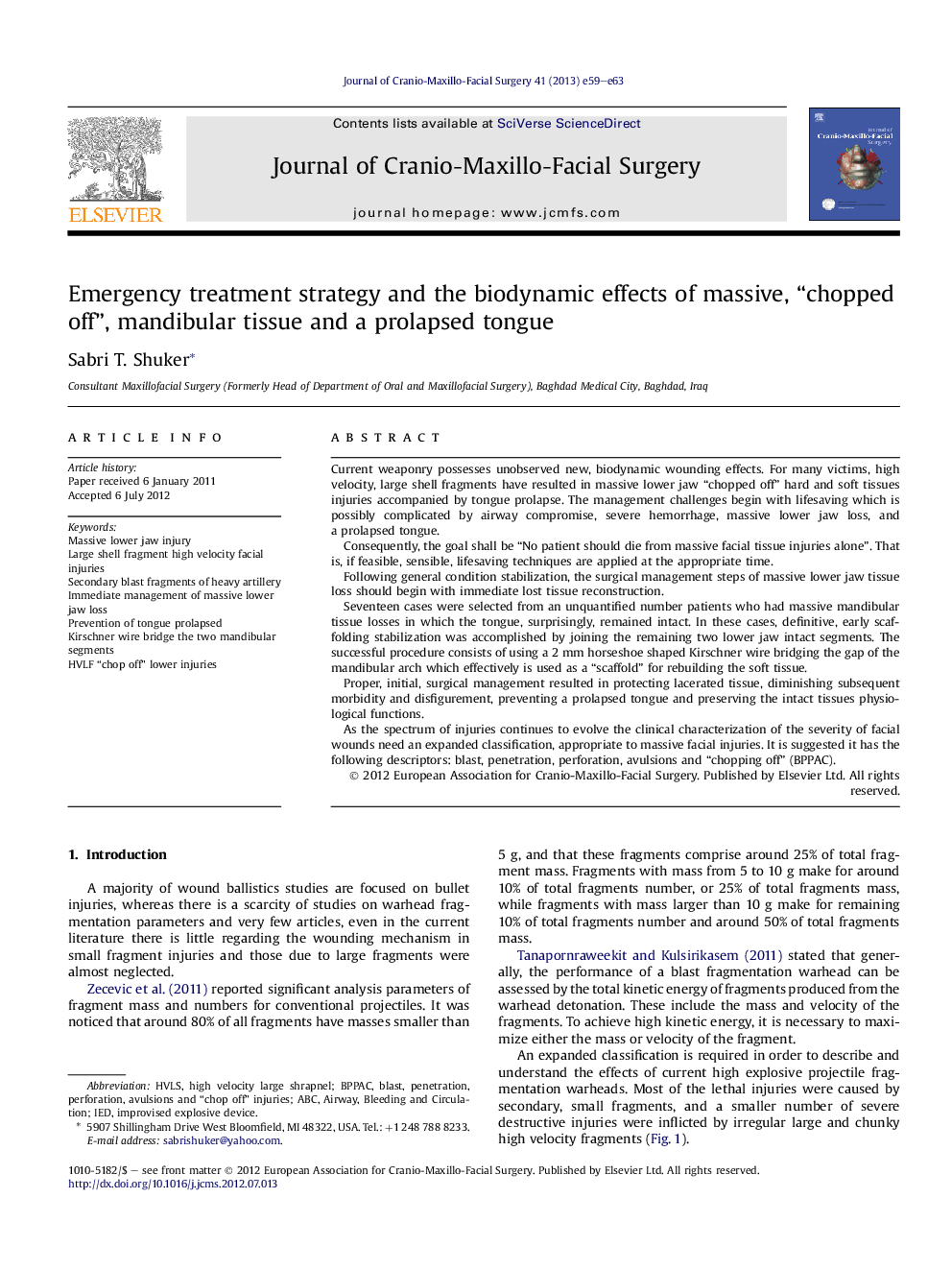| Article ID | Journal | Published Year | Pages | File Type |
|---|---|---|---|---|
| 3143120 | Journal of Cranio-Maxillofacial Surgery | 2013 | 5 Pages |
Current weaponry possesses unobserved new, biodynamic wounding effects. For many victims, high velocity, large shell fragments have resulted in massive lower jaw “chopped off” hard and soft tissues injuries accompanied by tongue prolapse. The management challenges begin with lifesaving which is possibly complicated by airway compromise, severe hemorrhage, massive lower jaw loss, and a prolapsed tongue.Consequently, the goal shall be “No patient should die from massive facial tissue injuries alone”. That is, if feasible, sensible, lifesaving techniques are applied at the appropriate time.Following general condition stabilization, the surgical management steps of massive lower jaw tissue loss should begin with immediate lost tissue reconstruction.Seventeen cases were selected from an unquantified number patients who had massive mandibular tissue losses in which the tongue, surprisingly, remained intact. In these cases, definitive, early scaffolding stabilization was accomplished by joining the remaining two lower jaw intact segments. The successful procedure consists of using a 2 mm horseshoe shaped Kirschner wire bridging the gap of the mandibular arch which effectively is used as a “scaffold” for rebuilding the soft tissue.Proper, initial, surgical management resulted in protecting lacerated tissue, diminishing subsequent morbidity and disfigurement, preventing a prolapsed tongue and preserving the intact tissues physiological functions.As the spectrum of injuries continues to evolve the clinical characterization of the severity of facial wounds need an expanded classification, appropriate to massive facial injuries. It is suggested it has the following descriptors: blast, penetration, perforation, avulsions and “chopping off” (BPPAC).
